- A Saree That Breathes Love And Reflects Heritage
- The History of Kota Doria Saree
- What Makes a Kota Doria Saree Unique?
- Weaving Process of Kota Doria Saree
- Types of Kota Doria Sarees
- How to Identify an Authentic Kota Doria Saree
- Styling Tips for Kota Doria Saree
- Why You Should Own a Kota Doria Saree
- Maintenance & Care Tips
- Kota Doria Beyond Sarees
- Where to Buy Kota Doria Sarees
- Famous Artisans and Weaving Clusters
- Government Support & GI Tag
- A Saree That Symbolises Grace and Heritage
A Saree That Breathes Love And Reflects Heritage
Imagine a saree that’s as light as air, sheer like mist and as beautiful and glowing as a moonlit night. There’s something special about this beauty that comes straight from the royal lands of Rajasthan. This one is a unique blend of cotton and silk. Well known for its checkered pattern, called khat, and gossamer texture. Yes! the very magical Kota Doria saree it is. Loved by women for centuries, this weave is perfect for hot and humid climates.
Let’s dive deeper into the story of the iconic Kota Doria saree and learn how to style this beauty.
The History of Kota Doria Saree
The Kota Doria weave traces its roots to the Mughal era. It is believed that the art of weaving fine muslin was brought to Kota, Rajasthan, by weavers from Mysore during the 18th century. Under the patronage of Rao Kishore Singh, the ruler of Kota, this delicate art flourished.
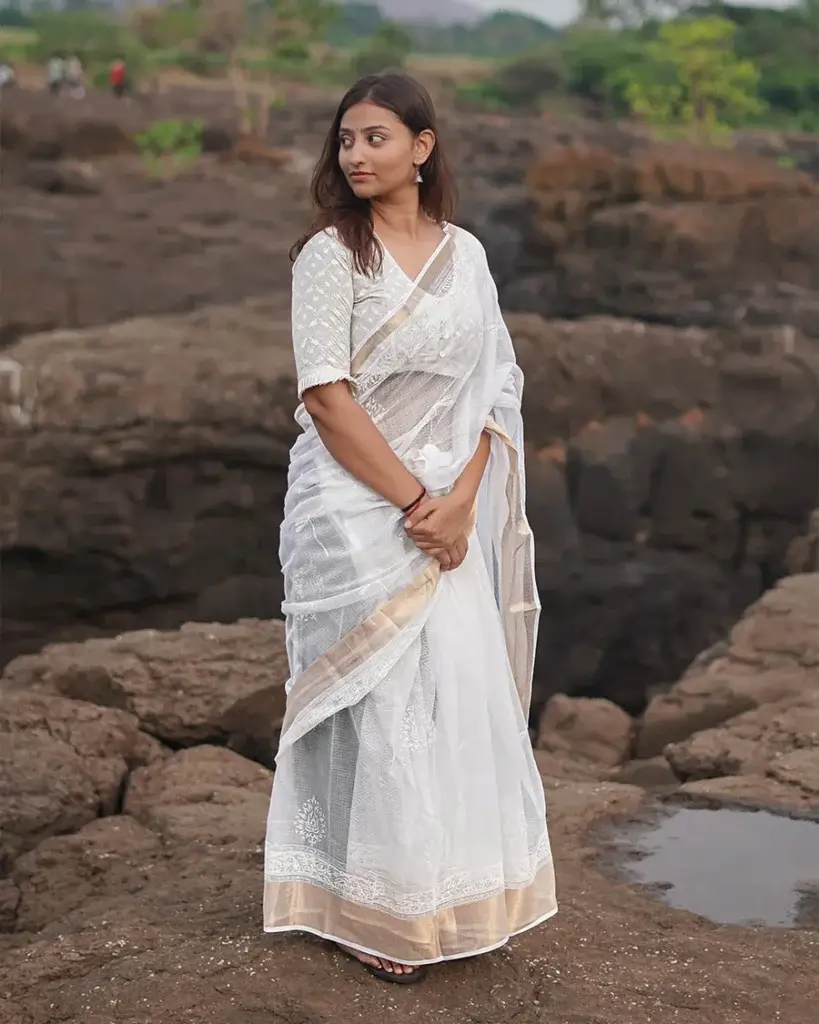
The word Doria means “thread” in Hindi, and Kota Doria signifies the unique weaving technique practiced in the town of Kota.
Originally used by royalty for turbans and angarakhas, the fabric gradually transformed into sarees and earned a special place in the saree world.
What Makes a Kota Doria Saree Unique?
Kota Doria saree is well known for its breezy and light weight nature. But there’s more that makes this weave unique. Let’s learn!
1. The Khat Pattern
Every authentic Kota Doria saree has a distinct square check pattern called khat. This grid is created using a fine blend of cotton and silk threads, giving it both strength and transparency.
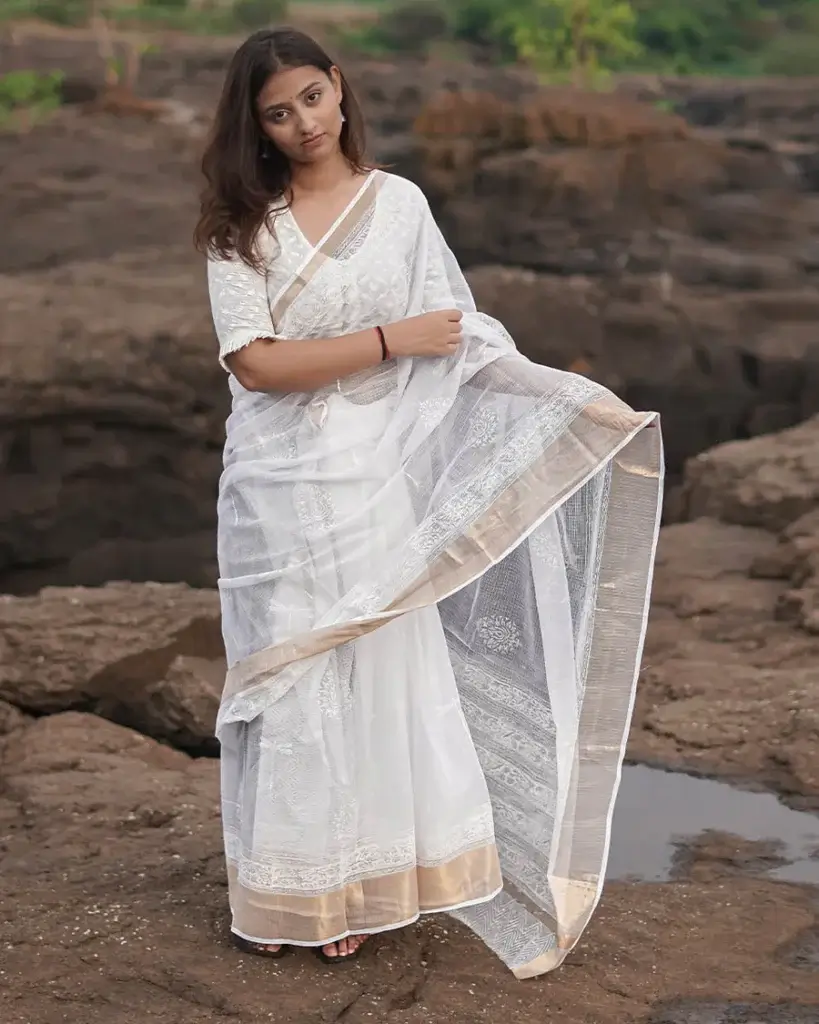
2. Lightweight & Breathable
These sarees are feather-light and ideal for summer. They are very elegant and without compromising on the comfort factor.
3. Handwoven Craftsmanship
Every Kota Doria saree is woven on traditional pit looms by skilled artisans, mostly women. The process is time-intensive and requires precision.
Weaving Process of Kota Doria Saree
The weaving of a Kota Doria saree is a delicate process that involves:

1. Preparing the Yarn
The warp and weft are made from a mix of cotton and silk. The silk gives shine, while the cotton provides strength.
2. Dyeing
The threads are dyed before weaving. Traditional colors like indigo, saffron, pink, and off-white are commonly used. Today, newer pastel and jewel tones are also popular.
3. Setting the Loom
The artisan stretches the warp threads across a wooden frame. Each square of the khat pattern must be uniform.
4. Handweaving the Fabric
The weaver uses the throw shuttle technique to pass the weft across the warp. This forms the lightweight, translucent texture. It can take days to weave one saree.
5. Finishing Touches
The saree is washed, starched, and sometimes embellished with zari borders, motifs, or hand-block prints.
Types of Kota Doria Sarees
Okay! so having learnt about the weave and the weaving process, let’s brief you about the types of Kota Doria sarees.
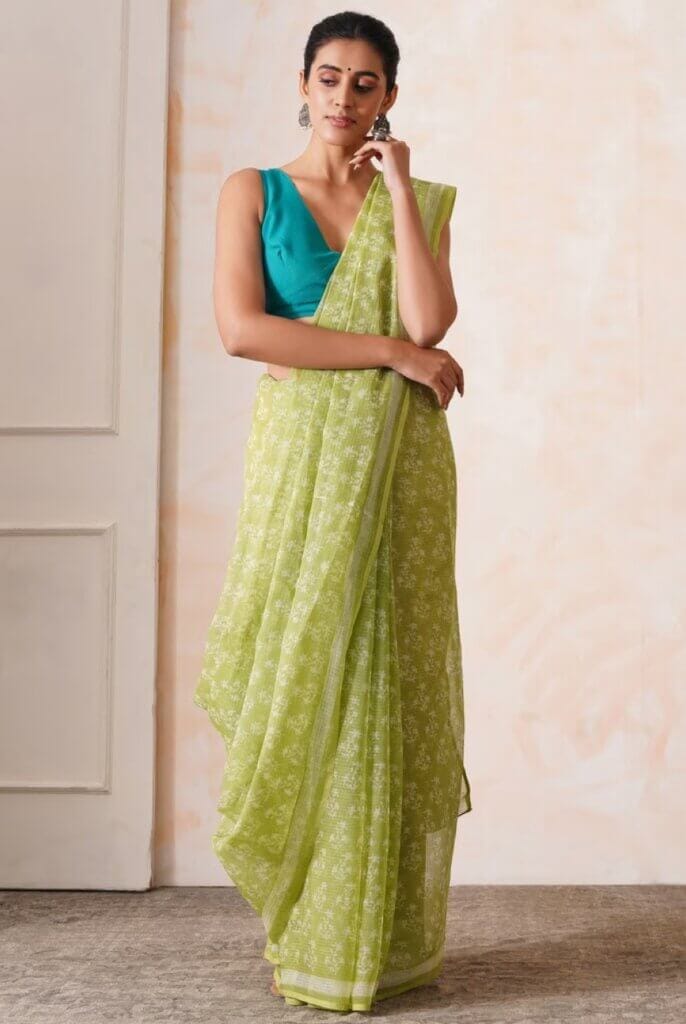
1. Pure Cotton Kota Doria
These are crisp, simple, and breathable. Perfect for daily wear or office looks.
2. Silk-Cotton Kota Doria
Slightly glossier and more formal. Ideal for festive or wedding functions.
3. Zari Kota Doria
Enhanced with gold or silver threadwork on the borders or pallu, the zari kota doria sarees are statement sarees for special occasions.
4. Printed Kota Doria
Block prints, digital prints, or floral motifs add contemporary charm to these sarees.
How to Identify an Authentic Kota Doria Saree
Since the weave is very popular, nowadays many machine-made replicas are sold as Kota Doria. Here’s how to spot the real one:
- Look for the khat – The checks should be tiny and visible throughout.
- Feel the texture – Authentic ones feel airy yet coarse.
- Check the edges – Handwoven sarees have uneven selvedge or small knots.
- Price – A genuine Kota Doria saree is usually more expensive than power loom varieties.
You can also look for Geographical Indication (GI) tag that verifies its authenticity.
Styling Tips for Kota Doria Saree
As always we’re never done without sharing how to style the weave we have discussed. This is the most important part. Here’s how to style your Kota Doria beauty the right way.
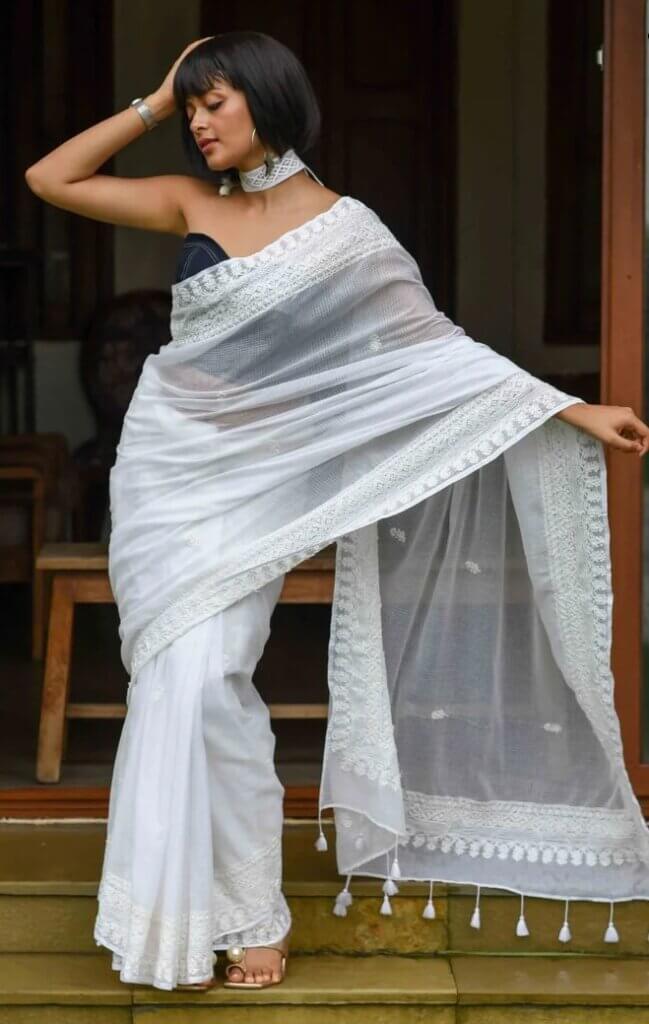
1. The Minimalist Look
Pair a plain Kota Doria saree with a contrasting blouse and silver jewelry. Perfect for brunch or meetings.
2. Boho Vibes
Choose printed Kota Doria sarees with handmade accessories like juttis, oxidized bangles, and fabric clutches.
3. Wedding Ready
Opt for zari Kota Doria sarees in rich colors like maroon, emerald, or gold. Pair with statement earrings and a potli bag.
4. Summer Chic
Pastel Kota Doria sarees styled with sleeveless blouses and floral hair accessories make a cool summer outfit.
Why You Should Own a Kota Doria Saree
- Timeless – These sarees never go out of fashion.
- Versatile – You can wear them casually or dress them up for parties.
- Comfortable – Ideal for hot and humid Indian climates.
- Cultural Legacy – Every Kota Doria saree supports traditional artisans and keeps heritage alive.
Maintenance & Care Tips
Since Kota Doria sarees are delicate, you should follow these care guidelines:
- Dry Clean for the first few washes.
- Use mild detergent and cold water if washing at home.
- Do not wring the saree. Gently dry it in the shade.
- Iron on low heat, preferably with a cloth on top.
- Store with muslin cloth to prevent yellowing and damage.
Kota Doria Beyond Sarees
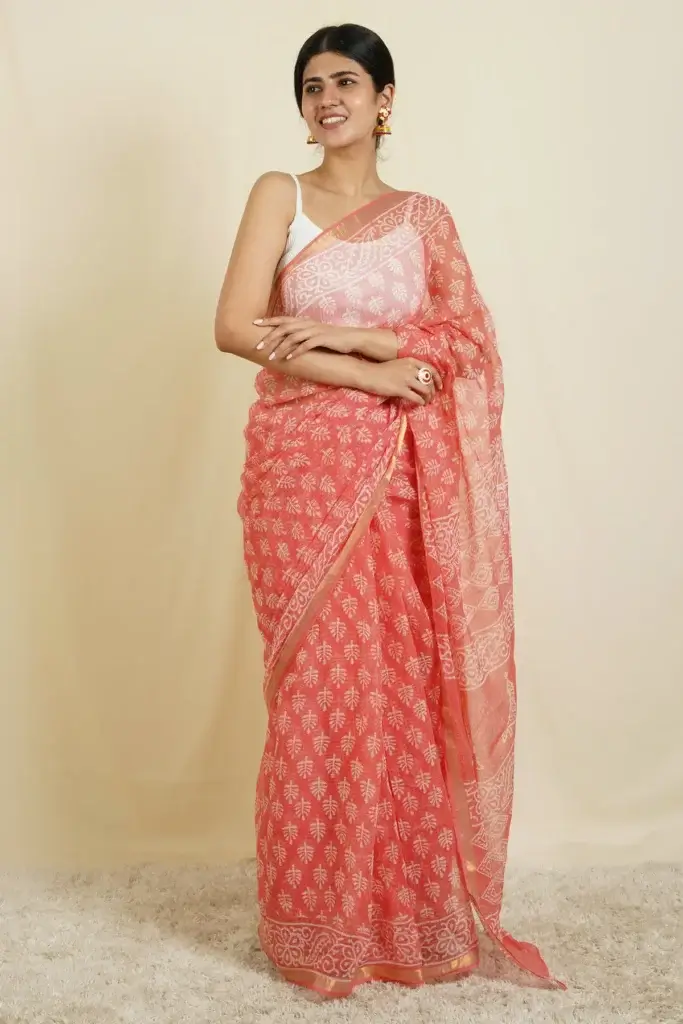

Today, Kota Doria fabric is also used for:
- Dupattas
- Kurtis
- Stoles
- Home furnishings like curtains and cushion covers
Designers across India are reinterpreting this fabric in modern silhouettes like dresses, tunics, and jumpsuits, while retaining its ethnic charm.
Where to Buy Kota Doria Sarees
You can buy Kota Doria sarees from:
- Local markets in Kota and Jaipur
- State emporiums
- Online handloom stores like Taneira, Okhai, Gaatha, Jaypore, Chidiyaa, Teejh and FabIndia
- Artisan fairs and exhibitions
Ensure you’re buying from certified sellers who promote authentic, handwoven pieces.
Famous Artisans and Weaving Clusters
Kota Doria weaving is practiced mainly in:
- Kaithoon village, near Kota city — known as the heart of production.
- Mangrol and Bundi — nearby towns with small-scale weavers.
Many women weavers are trained through government schemes and NGOs, ensuring the art is passed down generations.
Government Support & GI Tag
The Kota Doria saree was granted a Geographical Indication (GI) tag in 2005, protecting its identity. Organizations like the Handloom Development Corporation and Ministry of Textiles offer weaver welfare programs, design training, and subsidies. Still, the craft needs more visibility and support from buyers and fashion influencers.
A Saree That Symbolises Grace and Heritage
The Kota Doria saree is a stunning embodiment of India’s rich textile culture. With its feather-light fabric, unique check patterns, and royal origin, it’s a must-have that every saree lover should own.
Whether you’re a minimalist, a saree connoisseur, or just starting your collection, this beauty fits all aesthetics. So, why wait? Own a Kota Doria proudly, style it and flaunt your priced possession in all its glory!

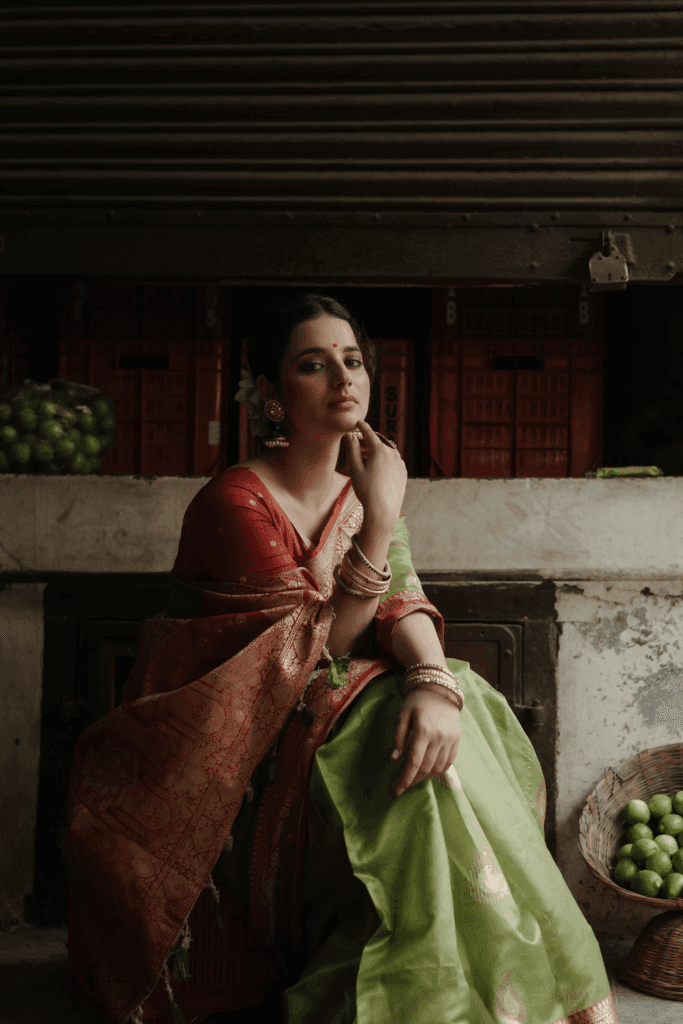
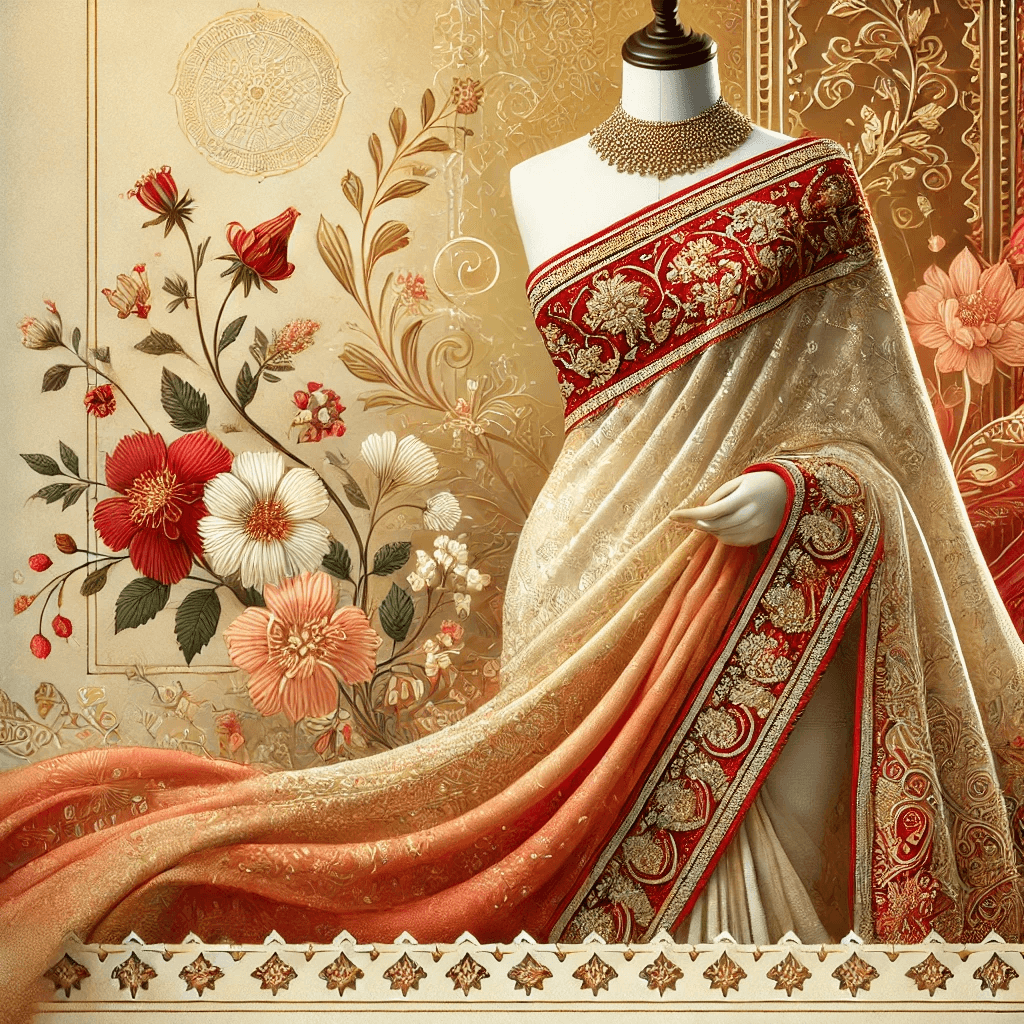
“Such an informative blog on Kota Doria sarees! The lightweight texture and subtle elegance—especially in versions without zari—make them perfect for everyday grace. At Qyaari, we celebrate this simplicity with our handpicked collection of pure Kota Doria sarees, crafted for those who love understated charm and breathable comfort. A wonderful read!”